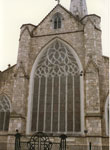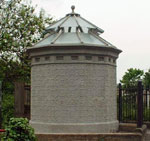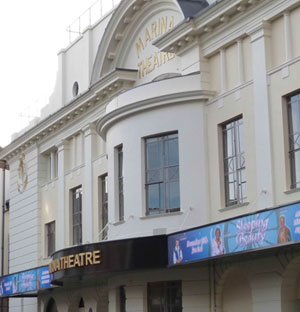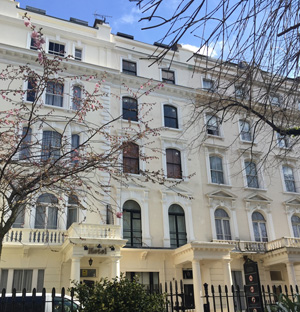Solutions for Heritage Structures
Retaining History
Reinforced concrete structures form part of our heritage and an increasing number of structures have been granted listed status from English Heritage. Concrete repairs to buildings of special historic or architectural interest must match the appearance of the rest of the structure in terms of colour, texture and finish to achieve a sympathetic restoration.
The Heritage Solution
Flexcrete’s concrete repair materials have been specified for remedial work on many listed buildings and structures over the years, including Harrogate’s Royal Hall, Bolton School and Thames Tunnel to name a few. Flexcrete’s hand applied, high build concrete repair mortars are easily moulded and sculptured to replicate the original texture and form of concrete. With repair mortars available in white and grey, close colour matches can also be achieved.
For more traditional heritage work involving repairs to stone and brickwork, we offer lightweight repair mortars which are compatible with the parent substrate and can be applied up to 100mm in a single application. Where conservation policy does not allow an external protective masonry coating to be applied, Flexcrete’s migratory corrosion inhibitor can be used. This is surface applied and seeks out and protects the steel reinforcement against the effects of chloride ions, without changing the colour or external appearance of the structure.
 Solutions for Concrete Repair & Protection - Commercial Buildings
Solutions for Concrete Repair & Protection - Commercial Buildings
At Flexcrete, we have extensive expertise in the concrete repair and protection of all types of buildings and structures. Download this information sheet to find out more about the benefits that our materials offer.
Download File
Regent Street Disease
Late in the 19th century, advances in structural engineering led to an explosion in the construction of steel framed buildings. Today, corrosion of the steel frame resulting from moisture penetration through masonry cladding is commonly referred to as ‘Regent Street Disease’.
This particular problem can be very difficult to identify until the corrosion is advanced, and it is therefore often necessary to undertake emergency repairs. In restoration works, Flexcrete’s water-based epoxy cementitious coating technology is often the preferred method for protecting and passivating corroded steel beams.
Contact Flexcrete Today
Solutions for Heritage Structures Problems and Solutions
- Freeze-Thaw Exposure
- Corrosion on Listed Concrete Structures
The Problem
 Deterioration of natural or cast stone through freeze-thaw exposure.
Deterioration of natural or cast stone through freeze-thaw exposure.
The Solution
All failed areas are reinstated with Monolite. This low density, high-build mortar is specially designed to minimise stress in the substrate as a result of its low shrinkage and low modulus of elasticity.
The product can be applied in thicknesses up to 100mm and can be easily shaped to match the form of the original stone. Monolite has been successfully used to repair external decorative cornices.
The Problem

The Solution
Following removal of unsound concrete and preparation of the steel, 2 coats of Steel Reinforcement Protector 841 are applied by brush.
Missing or removed concrete is then reinstated. Where a high build structural repair mortar is required, Monomix is the best choice. For general purpose repairs, Monolite, a low density mortar can be used. Both products have high build capabilities and can be formed to match surrounding concrete. Afterwards, Monorub may be applied to all surfaces using a bag rubbing technique to achieve a fair faced, colour matched finish.
Solutions for Heritage Structures Products
Find out more below about Flexcrete’s range of products for heritage structures:
| Biodex HB | High build, highly flexible, matt finish, biostatic coating with encapsulated biocide and silver ion technology. |
|
| Biodex Wash | A powerful surface treatment for neutralising active mould, fungal and bacterial growth prior to the application of Flexcrete products. |
|
| Bond-Prime | Single pack epoxy polymer primer to seal and consolidate substrates. |
|
| Cemprotec Flex-Tape | Covering small, static cracks and joints. Covering larger cracks and joints which are subject to movement and spanning joints between dissimilar substrates. |
|
| Cemprotec GFM | An advanced glass fibre reinforcement matting system. |
|
| Cemprotec MCI® 2020 | Surface applied corrosion inhibitor for the protection of reinforcement in chloride contaminated concrete. |
|
| Bonding Bridge 842 | Advanced surface impregnant which ennhances bond on high porosity substrates. |
|
| Monolevel 250F | Monolevel 250F is a fine grade polymer modified repair mortar for filling blow holes, cracks, surface defects & uneven surfaces. |
|
| Monolevel FC | Fairing coat for filling minor blow holes and defects prior to overcoating. |
|
| Monolite | Monolite is a lightweight mortar for cosmetic repairs. |
|
| Monomix | Low density waterproof mortar for general purpose, structural repairs. |
|
| Monorub | Fine grade polymer modified mortar for filling blow holes to produce a smooth finish. |
|
| Cure-Seal WB | Water-based curing compound and clear sealer for Flexcrete Repair and Protection Systems. |
|
| Roofdex HB | High build, cold fluid applied liquid roofing system. |
|
Solutions for Heritage Structures Projects
Take a look below at some of Flexcrete’s latest heritage projects, or browse the project profile pages to find more.
Project Profile
Project Location: The Marina Theatre, Lowestoft
An extensive range of Flexcrete repair and protection solutions were used to refurbish and upgrade the historic Marina Theatre in Lowestoft.
Project Profile
Project Location: King’s Gardens, Southport
Flexcrete’s products were used for concrete repairs to the lakeside retaining wall, balustrading and copings of a Venetian-style bridge in Southport.
Project Location: 6 Talbot Square, London
Flexcrete’s fairing coat and ecorative coating were chosen as part of a full repair and restoration solution to enhance the façade of a grade II listed residential property in London.




